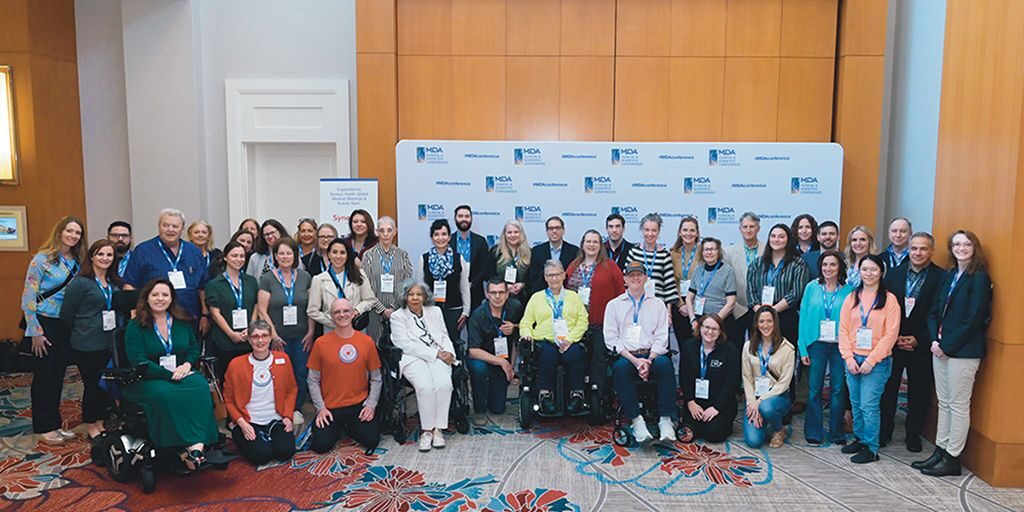
Understanding Titinopathies
By Myrna Traylor | Thursday, May 9, 2024
Titinopathies are a group of neuromuscular diseases caused by variants in the titin (TTN) gene. This gene carries instructions for cells to make the large muscular protein, titin, and mutations in the gene are associated with a number of neuromuscular diseases.

Bjarne Udd, MD, PhD, is a titinopathies researcher.
To better understand titinopathies, we spoke with Bjarne Udd, MD, PhD, a professor at the University of Helsinki in Finland, who leads a research group that specializes in understanding and identifying the genes involved in several neuromuscular disorders, especially those associated with the TTN gene. The work of Dr. Udd and his team is in great demand from research teams around the world and supports continued progress toward diagnosis and future treatment of the disorders.
Can you tell us about titinopathies and the gene that causes them?
We currently know of more than 10 different muscle disease types in the group of titinopathies, which can cause disorders both severe and mild, from prenatal death to very mild, late-onset lower leg weakness. TTN is enormous — 50 times bigger than most genes — which means that disease-causing variants in different parts of the gene result in very different types of disease manifestations. Some TTN variants may cause only cardiomyopathy (disease of the heart muscle), others cause only skeletal muscle disease, and many titinopathies cause both muscle and heart conditions. Clinical and genetic screening of family members for cardiac and muscle conditions may be indicated.
What distinguishes titinopathies from other types of neuromuscular diseases?
Many of the different titinopathies have similar clinical symptoms and signs as myopathies caused by other gene variants, such as congenital myopathy (CM), limb-girdle muscular dystrophy (LGMD), distal myopathy, Emery-Dreifuss muscular dystrophy (EDMD), and others. The main distinguishing factor is that the defect occurs in the TTN gene. Depending on where you have the disease-causing mutation in the gene and what type of mutation it is, there will be totally different patterns of weakness.
What causes titinopathy?
Titinopathies are inherited and can be either dominant, in which one mutation from only one parent is sufficient to cause the disease in the offspring, or recessive, in which you must inherit the gene mutation from both parents to have symptoms of the disease. An example of a dominant titinopathy is hereditary myopathy with early respiratory failure. An example of a recessive titinopathy is TTN-related centronuclear myopathy.
Are there any advances in the diagnosis of titinopathies?
Having the correct genetic diagnosis is currently the most important recent advance. Since the gene is so huge, it could not be sequenced before the new next-generation sequencing technology became available. This technique uses massive parallel sequencing (a method to determine the order) either of a set of genes (gene panels), the whole exome (the protein coding parts of genes), or the whole genome (all DNA parts). Before we knew these titinopathies were caused by TTN gene defects, the various diseases were just called by the way they presented. For instance, if you had foot drop (caused by weakness in the foot and ankle), the disease fell into a group of distal myopathies, and if you had weakness in the girdle muscles, it was called a limb-girdle disease.
Are there any promising treatments on the horizon?
Many preclinical attempts to find ways to correct or compensate for the genetic defects are underway. For one dominant form of titinopathy, hereditary myopathy with early respiratory failure (HMERF), we are trying to see if we can neutralize that chromosome with the defective TTN gene. People can manage very well with just one healthy protein coding TTN gene on one chromosome. So, our theoretical starting point is that if we silence that defective gene, the patient will have enough titin protein from the gene on the healthy chromosome. Studies are underway in fish and mouse models.
Another potential therapy we are looking at is targeting the defective TTN gene with a method called exon skipping (currently used in therapies for Duchenne muscular dystrophy), in which small sections of DNA are introduced to overlay the defective exon so the bad protein cannot be produced.
Most genes have five to 10 exons, but TTN is so massive that it has 364, which makes some treatment approaches challenging.
Myrna Traylor is a writer for Quest Media.
Titinopathies*
- Prenatal lethal myopathy
- Congenital myopathy with centronuclear pathology
- Congenital arthrogryposis
- Congenital amyoplasia without progressive weakness
- Early-onset limb-girdle muscular dystrophy (LGMD)
- Childhood-onset Emery-Dreifuss muscular dystrophy (EDMD)
- Juvenile recessive distal titinopathy (JRDT)
- Adult-onset proximal recessive rimmed vacuolar myopathy
- Adult-onset hereditary myopathy with early respiratory failure (HMERF)
- Late-onset dominant distal titinopathy (also known as tibial muscular dystrophy or TMD)
*Most of these can appear with cardiomyopathy.
Supporting Titinopathies
More than 30 neuromuscular advocacy organizations joined MDA’s Neuromuscular Advocacy Collaborative at the 2024 MDA Clinical & Scientific Conference in March. One was Team Titin, a titinopathy-focused nonprofit. Founded by Sarah Foye, Team Titin has a mission to support individuals, families, and their healthcare providers and serve as a catalyst for academic and industry research to develop a better understanding of Titin-related disorders.
Next Steps and Useful Resources
- For more information about the signs and symptoms of Titinopathies, as well an overview of diagnosis and treatment concerns, an in-depth review can be found here.
- Read more of the Quest Spotlight series on rare diseases.
- Stay up-to-date on Quest content! Subscribe to Quest Magazine and Newsletter.
TAGS: Drug Development, Exon Skipping, Gene Therapy, Genetic Testing, Research, Spotlight
TYPE: Featured Article
Disclaimer: No content on this site should ever be used as a substitute for direct medical advice from your doctor or other qualified clinician.




